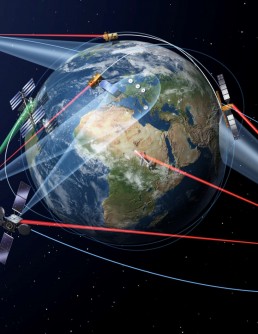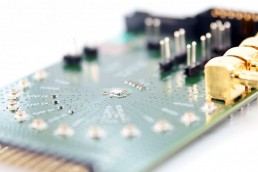Radio-Science instruments and missions
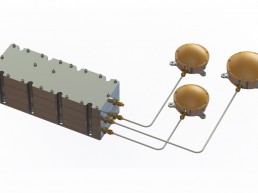
Mars Lander Radio Science - LaRa
Our Lander Radioscience (LaRa) is the first scientific instrument made in Belgium to ever land on the surface of Mars. It’s part of the ExoMars 2020 Mission. The LaRa instrument will receive a radio signal sent from Earth and beam it back from the Mars surface.
First scientists analyse the characteristics of the radio signal received on Earth. Then they’re able to measure the planet’s rotation with an unprecedented accuracy, thus inferring the characteristics of its interior. Overall, LaRa helps us understand the internal structure of Mars. And why Mars and the Earth did not evolve similarly.
On top of that, the data gathered by LaRa allows us to investigate the influence of the redistribution of masses. For example: the migration of ice from the polar caps to the atmosphere and its impact on the rotation of Mars.
Radio Frequency Interference & SIGINT
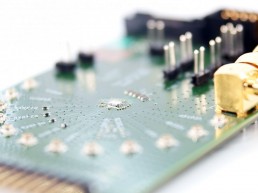
Radio Frequency Interference Mitigation Technology
Radio frequency interference detection and mitigation received increasing importance during the last years. Since ground uplink terminals became cheaper, faster and smaller, their numbers increased significantly. However, the operators of these terminals do not always have the required training or deployment expertise, increasing the chances of misconfigurations and misalignments. As a result, unintentional radio frequency interference became a serious threat for the satellite operators. They experienced a revenue-threatening increase of interference to their satellite fleet. Antwerp Space performed mission analysis and realized proof-of-concept demonstrators involving interference detection and reduction through the “On-board Spectrum Monitoring”, “DVB Carrier-ID detection”, “RFI Scenarios Application Requirements and Counteraction Techniques” projects.
The On-board Spectrum Monitoring (OBSM) project provides a commercially viable in-orbit tool to characterize the incoming Radio Frequency spectrum and to detect anomalies. Our design delivers an improved detection performance over existing ground-based systems, having features that allow highly effective resolution of the interference problems experienced by satellite operators.
The verification campaign of the DVB Carrier-Identifier-detection (DVB-CIDD) and demodulation project provides an in-orbit tool to detect and demodulate all carrier identifiers (Carrier IDs) present in the incoming spectrum. Its purpose is to identify the culprit for possible interference. Having this knowledge, the satellite operators can immediately intervene and urge the offender to correct his malfunction, minimizing the cost of the disturbance.
The RFI Scenarios, Application Requirements and Counteraction Techniques project identifies, selects and assesses the performance of algorithms for on-board detection, geo-location and mitigation of radio frequency interference affecting SATCOM, Navigation, Earth Observation and space TT&C applications. A generic RFI payload design for an in-orbit validation of RFI counteraction techniques has been produced, and the demonstrator mission definition is ongoing.
Navigation
Secured GNSS solutions
Galileo FOC TUR-P receivers
Receiving accurate positioning information and ensuring that this information is both secure and reliable is of paramount importance for public safety and security services, critical infrastructure operators, and defense departments. To this end Galileo, Europe’s Global Navigation Satellite System (GNSS), offers the “Public Regulated Service (PRS)”.
PRS is a unique encrypted navigation service. It’s a robust and secure signal that will be made available to authorized users, such as emergency services, via authorized national authorities. The PRS service provides resilience to signal attacks such as spoofing and jamming.
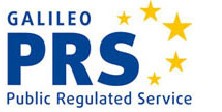
A major milestone in the Galileo European Navigation Satellite System’s development and deployment programmes has been achieved. Antwerp Space has been selected by ESA to design, develop and deliver the Galileo FOC TUR-P receivers (Full Operational Capability Test User Receivers for PRS) under EU/ESA contract. The FOC TUR-P receivers support future PRS evolutions and allow deep analysis of the PRS signals, including the processing of the PRS security messages (both in real time and offline). These state-of-the-art instrumentation receivers address the needs of ESA, EU Agencies and the Competent PRS Authorities (CPAs) of the EU Member States.
PRS end-user receiver and Security Module
Antwerp Space is progressing with the development of field PRS receivers for use by authorized users. These future Secure GNSS receivers will provide robust and secure positioning, navigation and timing to a range of European governmental applications and will provide support to a large number of European public safety and emergency services, including: fire brigades, health services (ambulances), humanitarian aids, search and rescue, police, coastguards, border control, customs, civil protection units.
The new family of products is being developed by a team of experts in navigation and cryptography.
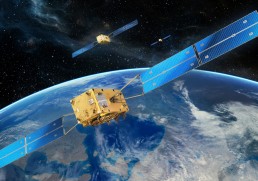
Communication
Communication Subsystems
Antwerp Space, a leader in the design and development of RF equipment for deep space, GEO, MEO, LEO and inter-satellite communications, is recognized for its outstanding capability to integrate and deliver critical Communication Subsystems.
Our dedicated team of RF specialists, based on its expertise and research actions, continuously creates innovative, efficient and cost effective solutions that will guarantee the success of the most ambitious satellite missions.
Antwerp Space has been awarded multiple contracts for Communication Subsystems, which are integrated ensembles of radio-communications equipment. Current projects are ExoMars 2022 and JUICE, both deep space missions that will respectively target Mars and Jupiter.

ExoMars (Exobiology on Mars)
ExoMars is a space program consisting of two missions, to orbit around Mars, and to land on the planet, executed in cooperation by ESA and Roscosmos, the Russian space agency. The first mission called ExoMars 2016, consisting of an orbiter and an experimental lander, was launched on 14 March 2016 and arrived at Mars in October 2016. The second mission is scheduled for a launch in 2022. It includes a Surface Platform that will land on the planet, bearing instruments and a rover that will explore the Martian surface.
Antwerp Space is the subcontractor for the Carrier Module Communication Subsystem. This enables the teams on Earth to send commands to the spacecraft during the whole duration of the flight of ExoMars 2022 to Mars.
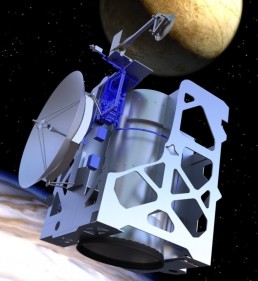
JUICE (JUpiter ICy moons Explorer)
The JUICE spacecraft will provide a thorough investigation of the Jupiter system in all its complexity with emphasis on the three potentially ocean-bearing ‘Galilean’ moons: Ganymede, Europa and Callisto, and their potential habitability. It will be the first spacecraft ever to orbit a moon (Ganymede) of a giant planet.
The Communication Subsystem will allow telemetry, tracking and command of the spacecraft as well as high-rate transmission to Earth of science instrument data.
Antwerp Space is responsible for designing, integrating and testing the Communication Subsystem, before it is installed onto the spacecraft. The detailed design and manufacturing of its different units is subcontracted to different companies in Europe, under the capable supervision of Antwerp Space.
Telemetry, Tracking & Control (TT&C) Transponder
Based on market requirements and in close collaboration with the European Space Agency, Antwerp Space designed and developed a new family of state-of-the-art TT&C transponders.
To answer the increasing demand for SWaP (Size Weight and Power) reduction, the new TT&C is built on a modular platform suitable for deep space, LEO and MEO usage. It will serve science, Earth observation as well as navigation missions.
To complete the family, a slightly different version adapted to Telemetry & Tracking of launchers and space transportation vehicles will be added. This will also allow communication with the operations center through a data-relay satellite, obviating the need for multiple ground stations.

Besides its extreme compactness, the new TT&C family offers the option to significantly improve the return of Earth observation- and scientific missions by strongly increasing the amount of data transmitted to the Earth station. This is performed by adding an X or Ka-band Payload Data Transmission (PDT) module dedicated to the purpose. Furthermore, to optimize the performance of satellites, a ‘deep sleep’ mode has been introduced, in which the power consumption is drastically reduced.
Antwerp Space’s strong heritage in innovative SDR (Software Defined Radio) design, has also been incorporated into this new family of products and allows to easily reconfigure the TT&C unit based on specific customer- or mission needs. This reconfiguration can take place just before launch, but may also be safely performed in flight. The new equipment offers the alternative of switching between several pre-defined configurations. To enable an accurate tracking of the satellite, advanced Pseudo-Noise (PN) and Differential One-way Ranging (DOR) tone ranging solutions can be selected.
Credits:
This development was made possible with support of the Belgian Science Policy Office
Intersatellite Communications
Reconfigurable Data Relay Satellite Modem
ARGO is an advanced reconfigurable high speed Modem developed by Antwerp Space. The modem delivers a fast rate of data transmission (up to 300 Mbit/s) suitable for existing and future satellite missions. The state-of-the-art design of this modem also yields a higher level of flexibility for different communication demands. It uses a high-performance encoding technology for the very first time in Europe and its architecture allows in-flight reconfiguration, by making use of the Antwerp Space qualified Software Defined Radio platform. This has a very innovative architecture and an exceptionally high on-board computational power. The ARGO modem has been selected by MDA Corporation. The first flight model has been launched into orbit for faster communication from the International Space Station (ISS) to Earth via the European Data Relay Satellite System (EDRS).

Cubesats: Communications
Intersatellite Link
Antwerp Space is working alongside Micro- and Nanosatellite manufacturers in order to offer them the most appropriate inter-satellite communication systems for LEO (New Space) constellations. Every constellation of smallsats has its own requirements in relation to its targeted application in terms of bandwidth, frequencies, throughput, size, weight, security and quality. Antwerp Space has developed a unique inter-satellite communication transceiver platform that can be rapidly tailored to our customer’s application needs and budget.
